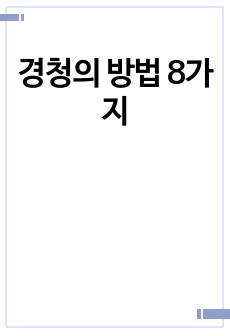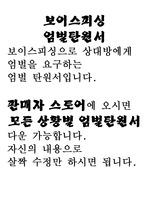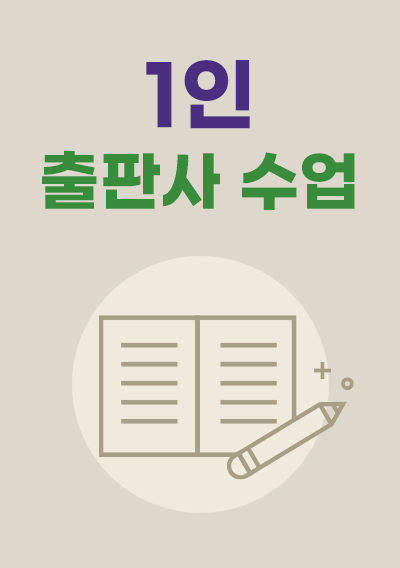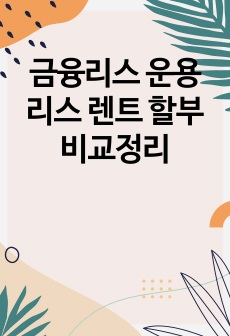* 본 문서는 배포용으로 복사 및 편집이 불가합니다.
서지정보
ㆍ발행기관 : 연세대학교 음악연구소
ㆍ수록지정보 : 음악이론포럼 / 2권
ㆍ저자명 : 이성천
목차
1. 머리말 - 문제제기
2. 창작의 역사
3. 창작방법
4. 작곡 초기단계와 관련된 기타자료
5. 창작의 개념 - 형성
6. 맺음말
한국어 초록
The purpose of this study is to come to an understanding of the composition methods used in Korean Traditional Music and with it a finding of a new vocabulary for the subject with a comprehensive meaning. The history of music is the history of creativism. There are many different theories to the origin of music but one point we can be sure of is that humans created music. There also may be various theories as to what or how music was made, but there is no question that humans made it sung it, and performed it. And as we can sure that the history of Korea is the history of Koreans, I believe that at the beginning point of Korean history, music was made and that that music was played. But music can only be understood through written records if any were left, whether or not in the literal or illiteral era, if there was no system for writting down music and other records left of it, we am never know of that music. Korea did not develop a written language until a later period but even with having the use of Chinese letter, the music from ancient 15th century B.C. to 1st century B.C.(Era of three Kingdoms), and from 918 to 1392 (Koryo peiod) cannot be examined nor will its form ever be understood. Although Solmizationd(內譜) was used during the Koryo period the writting of it was incomprehensible. Also Letter Notation(律字譜), and High-Low Letter Notation(工尺譜)was used to record Chinese Ceremonial Music(雅樂) and Popular Chinese Music(唐樂) but being also incomprehensible and it not being Korean music, these have been excluded from my studies. 1392, the founding year of the Yi Dynasty is the first time one is able to study the musical forms in Korean Traditional Music, In 1443, King Se Jong(1419-1450) developed the Hun-Min-Jung-Um(訓民正音), the Korean alphabet, and in 1447 created a complete system for recording music, the Mensural Notation System(井間譜). It was developed to write down Native Korean Music(鄕樂) and through these written records we are able to analyze the forms in music from the beginning of the Yi Dynasty. Thus in studying the composition methods in Korean Traditional Music, the most appropriate material for reference would be the first written records left in this era. The purpose of this study is to analyze the music from 1392 when Yi dynasty began, to 1450 the era of King Se Jong in order to further understand the composition methods of their time. In this era, there was no completely separate system for composing a new piece of music. Koryo songs and some of musics from <Poonga 12 Sibo>(風雅12詩譜) a part of 「Uire KyungJun Tonghae」 (儀禮經傅通解)written by a Chinese named Joo-Hee(朱熹), was used as a base, piece for composing all new tunes. <Poonga 12 Sibo> is a collection of songs using text from Sikyung (詩經) which is one of Confucian Scriptures and these songs have been passed through from the Chinese Tang Dynasty(618-907) to Song Dynasty(960-1279). Therefore, we can conclude that the songs of <Poonga 12 Sibo> are Chinese. I have analyzed 8 pieces composed using <Poonga 12 Sibo> as their base pieces. These 8 tunes were written before the Se Jong era and have maintained the characteristic of the Chinese 7 tone system. But I have changed the notes of the Chungwhangjong(潢鐘)and Chungtaeju(汰簇) in 12th Yul(律) down one octave, changed the starting note to Hwangjong(黃鐘), and the ending notes to Taeju(太簇) - Hwangjong(黃鐘) as in the Korean system of downward movement for its ending form. There are all together 12 songs in the <Poonga 12 Sibo> and of these, I have taken <NokMyung>(鹿鳴)<HwangHwangJaWha> (皇皇者華) <UhRyuh> (魚麗) <NamSanYuDae> (南山有壹) as the originating base pieces and have composed 8 new ones <SuBoRok>(수보녹)<SuMyungMyung>(受明命)<HwaHwangUn>(荷皇恩)<YoongAnJiAk>(隆安之樂)<HyuAnJiAk>(休安之樂)<MunMyungJiGok>(文明之曲)<MuYulJiGok>(武烈之曲) and <GunChunJung>(覲天庭) with new lyries. Illustration 1 shows the relationship the base pieces and new songs. Illustration 1 ◁표 삽입▷(원문을 참조하세요) All thd songs in the <Poonga 12 Sibo> are long so they have used either one movement in each song or if the movement is too short, have used 2 to 3 movements. As a method of composing, they have either contracted the original piece or have used all of a melodic line to create the new piece. Before the SeJong era, the Chinese <Poonga 12 Sibo> was generally used as the base music for creating new compositions but King Se Jong used only Koryo songs of native Korean music (鄕樂曲) to base new songs. Using <chung San Byul Gok> (靑山別曲) as the base reference music <Nab Shi Ga>(納氏歌)and<Hyu Myung>(休命) were composed; with <Suh Gyung Byul Gok>(西京別曲) the <Jung Dong Bang Gok>(靖東方曲) was written ; with <Han Lim Byul Gok> (翰林別曲) came <HwaSan Byul Gok> (華山別曲); <Man Jun Choon> to <Soon Ung> (順應) <Poong Ib Song> (風入松) to <Yoong Hwa> (隆化); <Ssang Hwa Gok> (雙花曲); to <Jung Myung> (貞明); <Ga Shi Ri> (가시리) to <Hyung Gwang> (亨光); <Ya Shim Sa> (夜深詞) to <Bo Yae> (保乂) ; and with <Sa Mo Gok> (思母曲) wrote <Chang Hwi> (昌微). Illustration 2 shows the relationship of Koryo songs and the new songs based on them. <Illustration 2> ◁표 삽입▷(원문을 참조하세요) <Hwa San Byul Gok> was written by using all of <Han Lim Byul Gok> and <Yoong Hwa> was composed using only a part of <Poong Ib Song>; s melodic line. The rest of the pieces used parts of their base piece's melodic lines and supplemented changed lines to create the new songs. Some of these changed lines are completely altered and only keep minimal characteristics of the base melodic line and rather than to call it a changed version of the base piece, we might call it a completely original line. Also the structure of the pieces can be divided into two forms - contraction and expansion. The two methods of composing were either to use all parts or some parts of the original piece, and in the case of using only some parts, the added changed lines would make it difficult to establish any reference to the base piece, also bringing about the expansion and contraction of the forms. I have analyzed 18 pieces composed from beginning of the Chosun era (Yi Dynasty)to the SeJong era and have organized their composition methods. 8 new pieces composed using <Poong 12 Sibo> as the base music are its strophic form and the pieces asing Koryo songs as their base are in through composed form. A point to be aware of is that even when using the Chinese songs as the base piece, the new compositions always were written reflecting the Korean musical styles and during the King SeJong era, when independence was strongly stressed, they not only chose only Koryo songs for their base pieces but having supplemented she new compositions with varied melodies and so on. They showed beginning signs of creativism in composing new and original pieces without being bound to original melodic lines or the base piece itself. Of course, in Korean traditional music, the 'act of composing' did not just begin in the Chosun era. But in reaching my objectives in understanding of composition method, by having chosen mateial from this period not only can we understand the essence(substance) of the music itself but because so many new pieces were composed in the beginning of the Chosun era that these pieces are the first and the oldest material we have that can be used for references. In order to understand the degree and the position that the composition methods used from end of the 14th century to middle of the 15th century (SeJong era) holds, I have compounded the beginnings of composition activities in the western music history. The beginning of western composition can be summarized by trope and sequence. Sequence can be considered to be a derivative of trope so I'11 deal only with troping. Trope can be divided largely into 3 sorts ; one is to take the original melody and melismatize it ; two is to place its text differently; three is to use both methods at once; but there is also a variety of other methods too complex to include in these divisions. Also when writting a new piece, sometimes a part of the original melody line is inserted into the new piece and/or is placed at beginning of the new piece. Troping uses mostly only the given piece or a given line. This was a method of composing used since the 9th century but coming into the 12th century the insertion or supplementation of parts or lines gave way to the creating of new lines at one's will. The difference between the western troping method of using the given melody or a given piece as the base piece with that of Korean traditional method is that although the composition method used in the Chosun era was that of being able to use the given music or line as a reference piece but the note itself and the ending styles could be changed and that many changed lines to supplement the new piece. The second objective study is to be able to find the most appropriate vocabulary in naming the activities and methods related to creating and composing of Korean traditional music. The reason is that music whether traditional or being written in the present are all tailed 'composing' and there is a need to reorgnize these different ideas. As stated above, in the beginning of the Chosun era the method of composition was that of using a base (reference) piece to create a new piece. So, from the position that this method is different from the method of creating a completely separate and independent music. 1 come to introduce the word 「Formation」 (形成) as a new word to describe the composing method of Korean traditional music. The reason 1 conclude to use the word 'Formation' is that not only from the understanding of the music in the Chosun era as described above, but from the viewpoint of history, the various music forms such as San-jo. Pan-so-ri etc. that are included all have the qualities of having 'Formation', thus giving me reasons to qualify this word. The word 「Formation」, as in the past performers, is the creative action according to die performer, and composition is the creative action according to the composer. I summarize that these are the two creative actions related to Korean traditional music. This study being the very first in analyzing the composition methods in Korean traditional music, I conclude my thesis with the beginning of my studies in composition methods of the Korean traditional music.
참고 자료
없음





